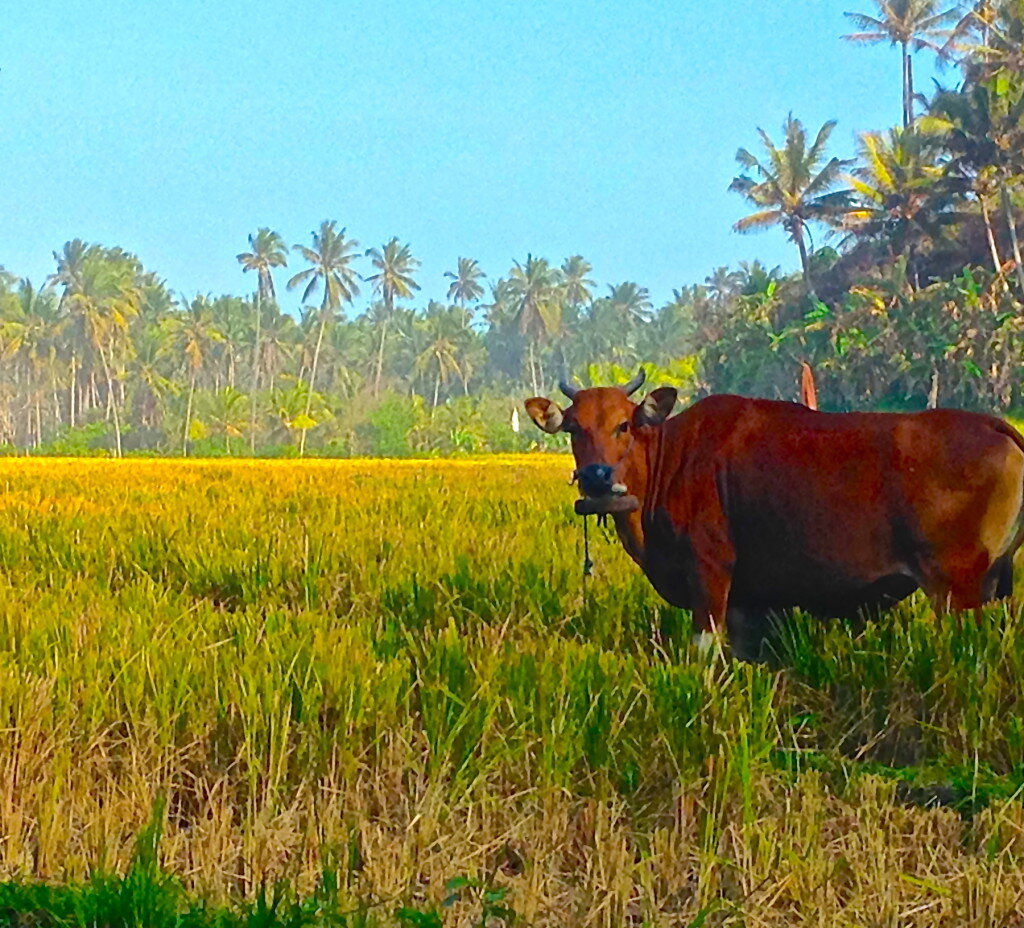VITAMIN K2, CHAPTER 2, “THE GRASS-FED VITAMIN”
In the previous blog post on vitamin K2 we covered a lot of ground. We cleared up what K2 is and why it’s so important to our over all well being and vitality. We also began to uncover why K2 stayed under the radar for so long. Let’s explore this a bit further and also explain more about the sources of K2, why it disappeared from our diet, and why Dr. Kate Rheaume-Bleue, leading authority on K2, calls it the “Grass-fed Vitamin”.
In 1975 researchers at Harvard Medical School identified osteocalcin, K2’s team mate, the protein that plays an important role in drawing calcium into bones and teeth. Then in 1997 scientists were finally able to distinguish the processes which K2 so distinctly expedited. The two processes having nothing to do with coagulation were placing calcium into bone and keeping it out of arteries.
Prior to this discovery, K2 was carefully being coaxed out of hiding thanks to the extensive research of Dr. Westin Price, a dentist on a quest to discover the cause of dental cavities and their link to chronic illness. After years of studying native communities the world over, Price found that traditional people had little to no need for dentists or even doctors until they began consuming foods of modern civilization: specifically foods that could travel long distances without spoiling like processed grains, processed sugars, canned goods, and refined fats. His research was published in 1939 but unfortunately due to Price’s pedigree as a dentist and the fact that he could not identify the nutrient and simply labeled it as”X”, his groundbreaking research went unrecognized by mainstream science for years. Price’s abundant research into the health benefits of K2 far precedes the modern science that is finally catching up albeit at a glacial speed.
What was in these traditional diets that harbored the nutrient “X” that Dr. Price linked to the vitality, longevity, and dental health of these native people? It turns out that the traditional cuisines boasted 10 times more fat soluble vitamins than the American fare of the 1930s. Dr. Price concluded that it was the fat soluble vitamins that provided native people with superior nutrition. Fat soluble vitamins are needed in order for the body to properly make use of other nutrients, such as K2’s role in escorting calcium. It was the unfortunate combination of the processed “white” foods and the decline of K2 laden foods that led to the waning health of both the native and the North American populations.
Some of the K2 rich foods in native diets that have been lost in the modern diet are fermented vegetables, organ meats, animal fat, fish and fish eggs, the meat and eggs of pastured birds, and meat, milk, and milk products harvested from animals that fed on rapidly growing grasses. In Eastern diets natto, fermented soy bean, was the predominant source of K2 and is now known to contain the highest concentration of K2 of any food measured, yet it has taken a back seat in the modern Asian diet.
This vital nutrient unfortunately started to disappear from our diets when agriculture modernized in order to accommodate higher yields, feed more people, and maximize profit. The large scale grain feeding of live stock can be directly linked to the decline in K2 from our food supply. Animals have the ability to convert minerals found in the soil and energy from the sun into useful nutrients. Consumption of these animal products makes these nutrients bio-available to us humans. When ranchers moved animals from pastures to indoor feed lots everything changed. Animals in the pasture were able to soak up plenty of sunlight and synthesize vitamin D and they consumed green grass packed with vitamin A and K1. After decades of industrializing food production, today’s meat, dairy, poultry, and eggs are produced in North America using confinement with little to no sunlight and grain feed.
So how did the K2 get lost in this development? Animals can convert K1, which is found in greens, to K2, then we eat the animal or it’s milk or eggs and benefit from K2. If there is no K1 in the feed then K2 cannot be synthesized and grain feed offers little to no precursor that lead to production of K2. So, in short, grain-fed, sun-starved animals provide us with no K2 and are also limited in other vital nutrients that we enjoyed for centuries from consuming animals that grazed on green grasses. Dr. Kate Rheaume-Bleue refers to K2 in her book Vitamin K2 and the Calcium Paradox, from which I sourced much of my information, as the “Grass-fed Vitamin”. Being mindful of consuming grass-fed animals and animal products and avoiding “factory” farmed animal products can dramatically increase the levels of K2 in the diet. In fact, some of the most delicious foods like eggs, brie and gouda cheese, and beef are packed full of vitamin K2 as long as they are sourced from grass-fed animals.
Refrigeration also led to a decline in K2. K2 rich fermented foods lost popularity as they were conceptualized before refrigeration. Fermented food is an ancient, artisanal method of preserving the nutritional integrity and shelf life of food. Once refrigeration was introduced, there was less need to preserve food using these timeless techniques. The process of fermenting foods can also be quite time consuming, another variant in the fading presence of this K2 rich food. After all, who had time to ferment food in America’s new, fast-paced life? And the K2 packed, fermented natto also lost popularity in the East. Fortunately, in recent years fermented foods have enjoyed a rise in popularity and they are starting to make a strong come back.
So how much K2 do we need to consume in order to avoid calcification of arteries and maintain bone density? As little as 45 micrograms of K2 can reduce cardiovascular mortality. Those who consume natto frequently will eat up to 300 micrograms a day! Fortunately K2 has no known toxicity so consuming K2 rich foods often will help maintain your 45 microgram limit. If grass-fed animal protein and fermented foods are difficult to source consider a K2 supplement. A good rule of thumb would be to avoid a supplement that does not specify what type of K it is supplying. It’s also a good idea to familiarize yourself with the difference between the M-K4 and the M-K7 supplements. I recommend the M-K7 supplements as they are sourced from natto and offer a longer half-life in the body, providing more prolonged protection. I personally take an M-K7 K2 supplement just in case I’m not getting enough of it in my diet.
Along with heart health and bone density, K2 promotes healthy brain function, supports growth and development in children, ensures healthy skin, and has even recently been linked to preventing certain forms of cancer. Although it evaded us once before, thankfully new research and modern nutrition theory have brought K2 back into the mainstream.
Hopefully this will inspire you to eat foods containing K2 or speak with your health care provider about a K2 supplement. It’s a super nutrient that is so essential to our well-being and our bodies need it to function optimally. So make a point to incorporate the “Grass-fed Vitamin” into your life and that of your family’s.
To explore more on K2 I highly recommend reading Dr. Rheaume-Bleue’s book. She has left no stone unturned and has written what I think is one of the most important books in today’s nutrition discussion. Here is a link to a great interview with Dr. Rheaume-Bleue from mercola.com.
Be happy, be healthy….
Breath, Eat, Thrive
Sofia


